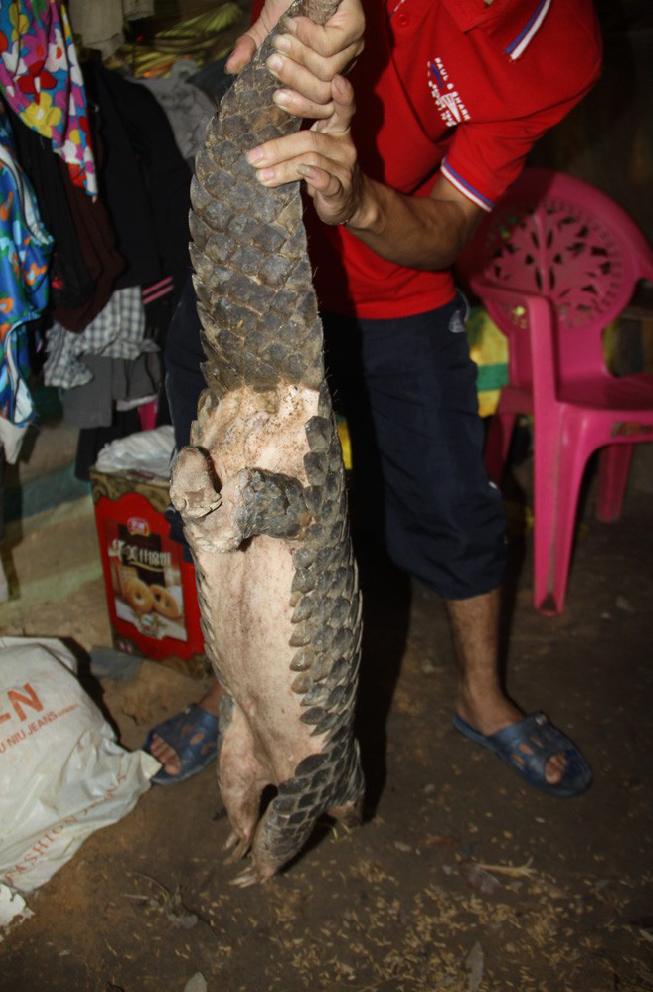Roll with us - World Pangolin Day 2020
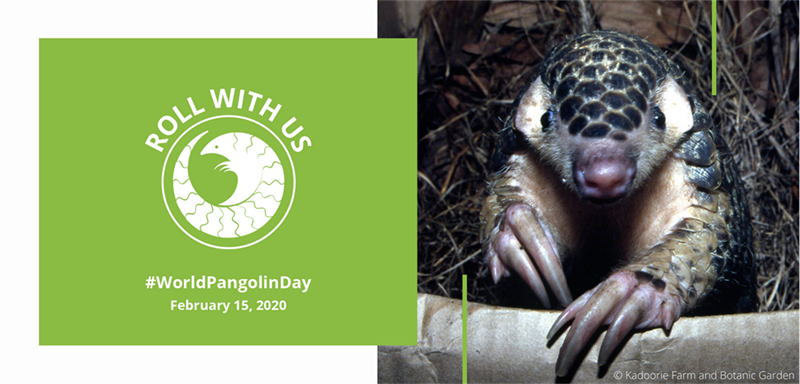
The ninth World Pangolin Day takes place today, 15th February. Let’s learn more about this amazing scaly friend!
The Pangolin Close Up
Pangolins are unusual looking mammals they are covered in hard, plate-like scales which are made of keratin – the same substance that forms our fingernails. It is sad that most pangolin species are now being driven toward extinction primarily because of the demand for their keratin scales. There is no scientific evidence to suggest that the scales contain healing properties or special medicinal functions and this makes the case of this amazing animal even sadder.
When threatened, pangolins defend themselves by rolling up into a tight ball. They are endearing animals as they have no teeth and cannot bite and this defensive posture is clearly not very threatening!
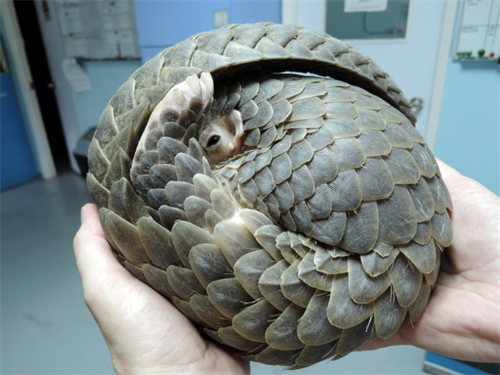
Lateral-view-3-(2).jpg)
Chinese Pangolins (Photo Credit: KFBG)
Pangolins have an elongated pointed head and a long sticky tongue for catching ants, termites and other insects. They are able to constrict their ears and nostrils to keep insects out while they are feeding and their powerful limbs are designed for digging into termite mounds and anthills. Pangolins can eat 10% of their body weight in termites per meal. Extrapolating this fact and knowledge of natural termite densities, it is estimated that a single adult pangolin is capable of potentially regulating the damage caused by termites over 16.5 hectares of forest.
Are there any wild pangolins in Hong Kong?
Yes, Chinese Pangolins (Manis pentadactyla) are native to South China including HK. They can inhabit woodlands and shrublands. They are usually solitary and nocturnal, sleeping during daytime in underground burrows. Although primarily ground dwelling, Chinese Pangolins are perfectly capable of climbing trees and are in fact good climbers.
The Chinese Pangolin is protected in the Hong Kong SAR and is listed as critically endangered on the IUCN Red List.
.png)
(Source: IUCN Red List)
To further enhance the conservation of the local pangolins, the Agriculture, Fisheries & Conservation Department of the HKSAR Government, with input from local experts, has led the development of a “Chinese Pangolin Species Action Plan 2019 - 2024”. This important document will help to guide all future scientific studies and conservation strategies for the local Pangolins.
Pangolin Rescue
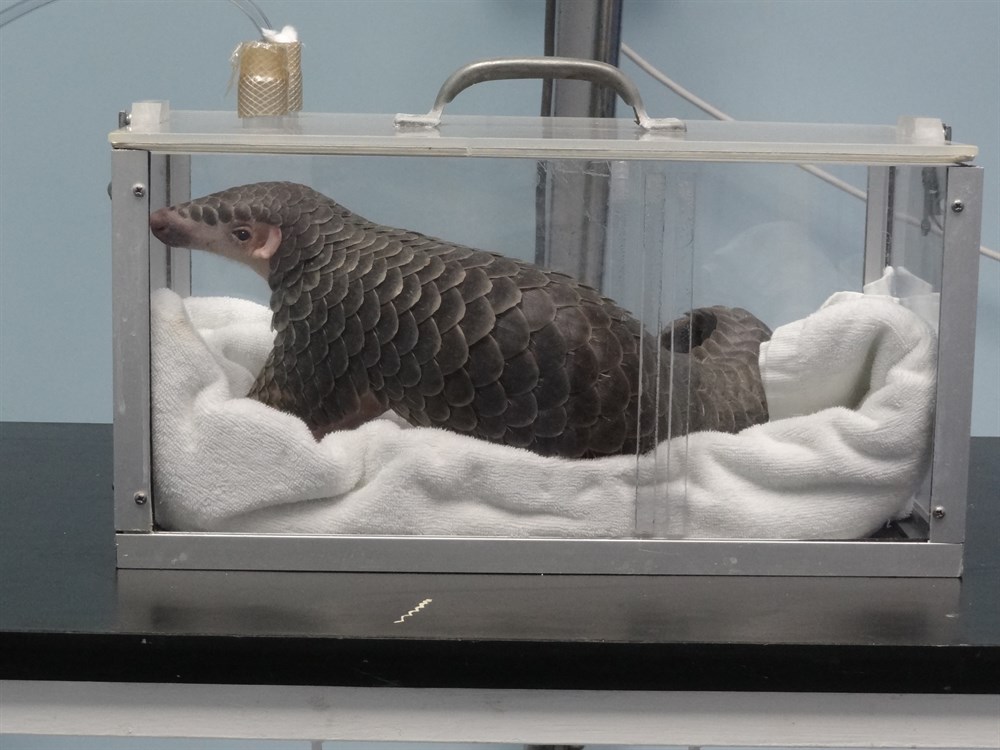
A rescued Chinese Pangolin undergoing a health check (Photo Credit: KFBG)
KFBG Wild Animal Rescue Centre has received 13 wild Chinese Pangolins since 1994 all were discovered sick or injured in Hong Kong. A professional rescue team takes care of them after arrival at KFBG prior to releasing the pangolins back to the wild when they have recovered from their injuries. Since 2000, over one-third of pangolins admitted to the Rescue Centre had been identified as victims of dog attacks.
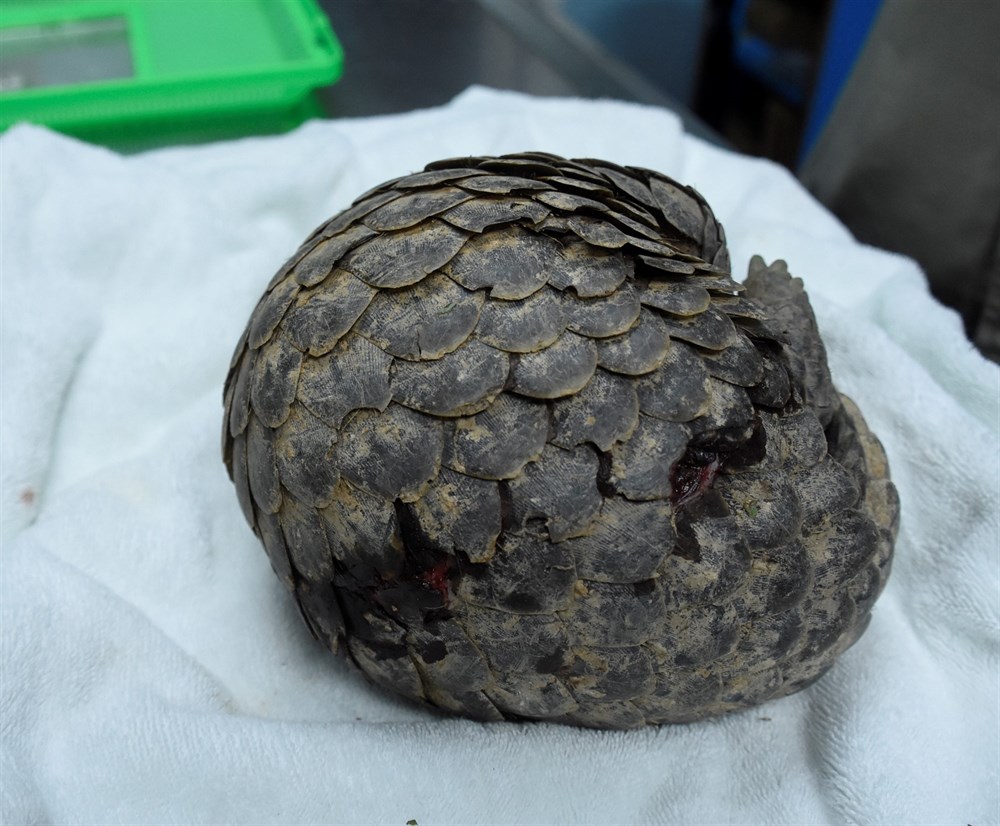
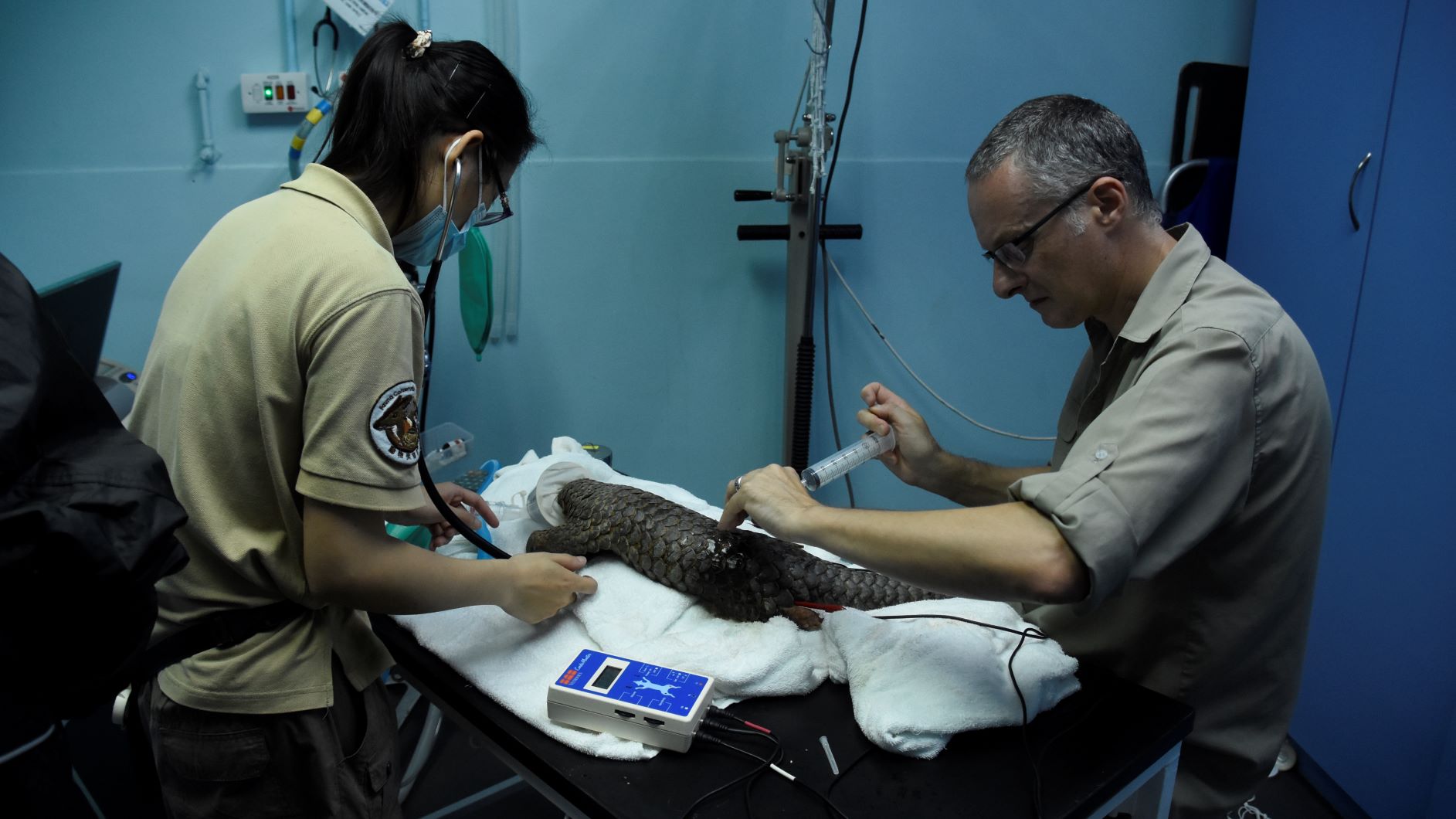
A female Chinese pangolin that was rescued in May 2017 following attack by stray dogs (the female is anaesthetized during a health check at the KFBG Wild Animal Rescue Centre) (Photo Credit: KFBG)
Before being treated and during the health check at the KFBG Wild Animal Rescue Centre, the injured pangolins receive a radiographic examination. The X-ray image can help us understand the mammal’s anatomy and discover internal injuries.
Interestingly, since the pangolin has no teeth, it swallows insects whole and relies on sand and gravel stored in its stomach (the white cloudy mass in the middle of its body in the picture) to assist in the grinding of its food.
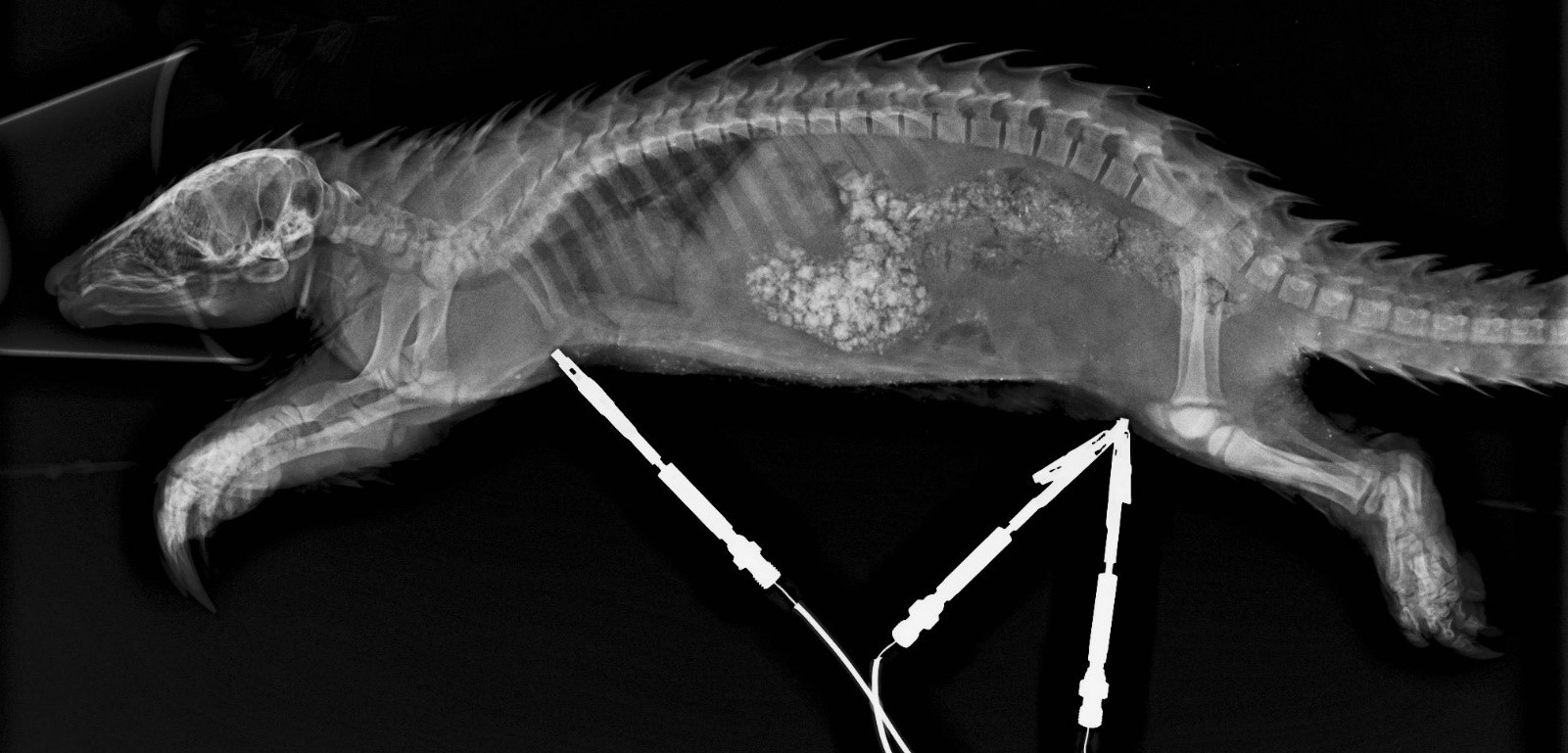
X-ray (radiograph) of a rescued Chinese Pangolin (Photo Credit: KFBG)
Note: The medical clips in the X-ray image are attached to monitor the heart rate. And the cone over the animal’s face is an anaesthetic face mask.
Introduction to Pangolin DNA work

Pangolin scales and frozen carcass (Photo Credit: KFBG)
There are eight species of pangolin, four from Asia and four from Africa. The Pangolin has the unfortunate record of being the most trafficked mammal on earth and is under threat of extinction. International pangolin trafficking mainly involves scales, and live and dead animals from Africa and Asia primarily destined for China and Vietnam. Many trafficked consignments have been seized in the Hong Kong SAR which seems to be a transit point for some of the illegal trade.
Between 2015 and 2019, Hong Kong authorities seized over 35 tons of pangolin scales that represented about 70,000 pangolins. The Conservation Genetics Laboratory of KFBG uses DNA forensic techniques to study which of the 8 species are involved in seizures and where they originated.
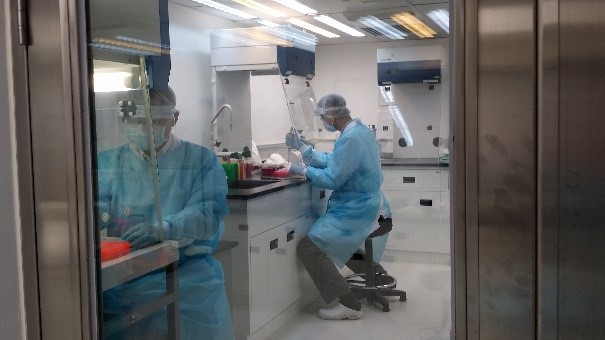
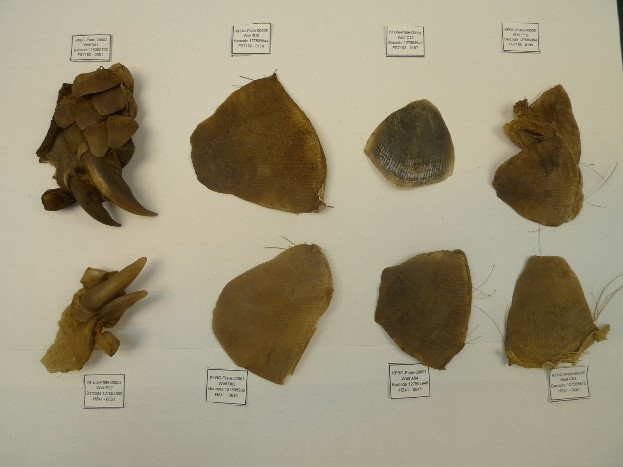
Geneticists in the lab and scale samples (Photo Credit: KFBG)
The DNA analyses has indicated that all four African pangolin species (Phataginus tricuspis, P. tetradactyla, Smutsia gigantea and S. temminckii) and one Asian pangolin species (Manis javanica) are found in Hong Kong seizures. Also, it has suggested that African pangolins were poached across large areas of their natural range and then delivered to a small number of trade transit hubs.
Lab work is still ongoing to investigate the seizures from Africa where recently the majority of the illegal consignments originate. There is urgent need to continue to tackle the illegal trade and for the courts to hand out sentencing that is relevant to the massive damage and extinction crises facing all Pangolin species. Public education has an important role to play regarding the conservation and protection of these majestic animals.
Understanding consumer motives is essential in the fight to reduce the demand for pangolin scales for use in traditional medicines. Some media reports have claimed that demand is related to the purported presence of the analgesic tramadol in scales. However, research has shown that scales from pangolins do not contain tramadol. Furthermore, the Director of the School of Chinese Medicine at Hong Kong University has advocated removing endangered wildlife from Traditional Chinese Medicine (TCM) as the use of sustainable and herbal alternatives is possible. Continuing to use endangered species only serves to damage the reputation of the TCM and is clearly not sustainable. According to a survey conducted by the University of Hong Kong and the global conservation organization WildAid in 2019, more than two-thirds of the Hong Kong SAR public believes Chinese medicine should phase out any use of pangolins.
The wild pangolins on Hainan Island, China
A wild pangolin found by villagers in southern China
The Kadoorie China Conservation Department (KCC) has been carrying out biodiversity surveys on Hainan Island since 1998. Experts visited more than 50 places but found no traces of wild pangolins. In 2013, KCC interviewed 56 rangers and hunters in several protected areas on Hainan Island. Most interviewees said that since 1990s, wild pangolin sightings started to decrease significantly, with only sporadic records after 2000, and the mammals have almost disappeared now. The survey data also showed that 93% of the respondents born in or before 1983 had seen pangolin(s); among the respondents born in or after 1984, nearly 90% of them had never encountered one.
Legal Protection
_Gary-Ades_Sekkong_40(1)_cropped-(1).jpg)
Rescued Chinese Pangolin prior to wild release (Photo Credit: KFBG)
In Hong Kong, the Chinese Pangolin (Manis pentadactyla) is a protected species under the Wild Animals Protection Ordinance Cap 170, meaning hunting and possession of the animal without a permit can result in fines and jail. It is also a scheduled species under the Protection of Endangered Species of Animals and Plants Ordinance (Cap. 586), which gives effect to CITES. Any commercial trading of the Chinese Pangolin (which is in CITES I), or its body parts, has been banned.
In 2000, CITES established a zero export quota for wild-caught Asian pangolins traded for primarily commercial purposes, effectively enacting a proxy trade ban for the Asian pangolin species. In September 2016, all eight species of pangolin were listed on CITES Appendix I, effectively banning the international trade of any species.
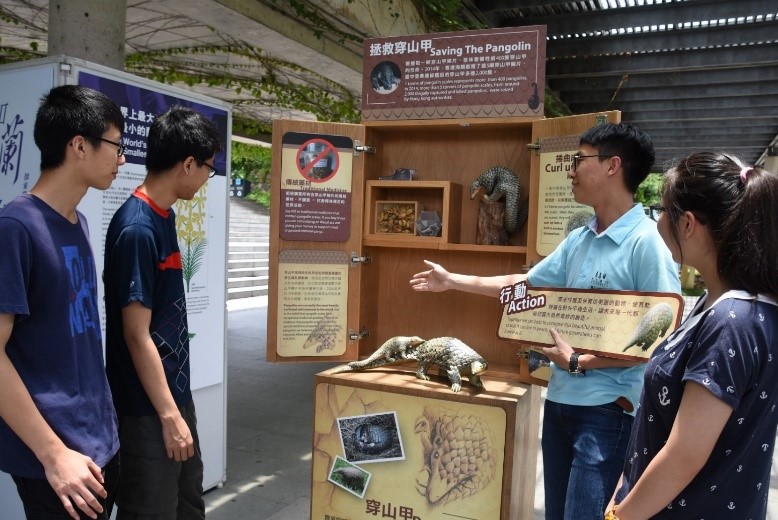
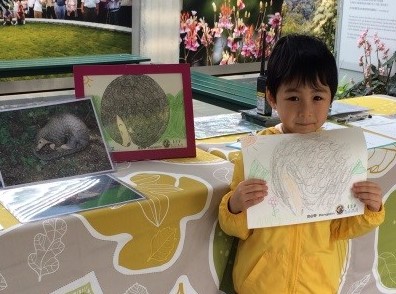
Education is key to protecting this amazing animal (Photo Credit: KFBG)
All wildlife has important functions in nature and removing one species can not only have detrimental effects on the environment but can also have unforeseen consequences for humanity. We should all work together to protect Pangolins and other wild animals so that their roles in nature can be maintained and future generations of humans can also enjoy their splendor. We must not forget that humans are also part of nature and require the balanced ecosystem functions for our own survival on Earth.
Some further information:
- AFCD Chinese Pangolin (Manis pentadactyla) Species Action Plan 2019-2024:
https://www.afcd.gov.hk/tc_chi/conservation/hkbiodiversity/speciesgroup/files/Chinese_Pangolin_SAP_Dec2019.pdf - Molecular tracing of confiscated pangolin scales for conservation and illegal trade monitoring in Southeast Asia:
https://www.sciencedirect.com/science/article/pii/S235198941500089X - Ming Pao Weekly - 28 pages on the illicit pangolin trade (Chinese only):
https://www.mpweekly.com/culture/topic/%E8%AA%B0%E5%B0%87%E6%BB%85%E7%B5%95%E6%9C%80%E5%BE%8C%E4%B8%80%E9%9A%BB%E7%A9%BF%E5%B1%B1%E7%94%B2 - Trading in Extinction -- The Dark Side of Hong Kong's Wildlife Trade:
https://www.kfbg.org/upload/Publications/WLC_FullReportEng_FINAL.pdf


